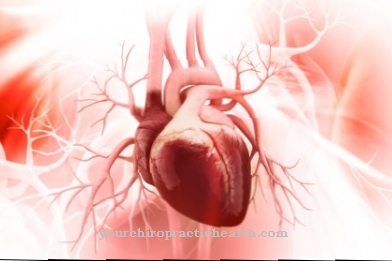At Mizolastine is an active ingredient that is one of the so-called H1 antihistamines. The drug is used in the majority of cases for the treatment of hay fever, urticaria and allergic inflammation of the conjunctiva. The focus is on treating the respective symptoms, not their causes.
Causes of Hay Fever
The active ingredient mizolastine is primarily characterized by its anti-allergic effects. It also belongs to the pharmaceutical category of second-generation antihistamines. The drug is usually given by the oral route in the form of tablets. The most common indications for a prescription of the drug are hay fever, nettle rash and allergic rhinitis.
As part of treatment with the drug mizolastine, side effects such as headaches or digestive problems may occur. The drug mizolastine is metabolized by CYP3A4. It is also assumed that the active substance mizolastine leads to a prolongation of the QT time in some cases.
The active ingredient Mizolastine is partly synonymous with the term Mizolastinum designated. The drug is available, for example, under the trade names Mizollen® or Telfast®. The latter is an antihistamine that belongs to the second generation. Basically, the active ingredient mizolastine is a derivative of benzimidazole and piperidine. The drug is also structurally related to astemizole.
The drug is available on the German market in a dosage of ten milligrams. These are film-coated tablets that must be prescribed by a doctor. Since there is a lack of empirical values and studies, the drug should not be used during pregnancy and breastfeeding.
The drug mizolastine is currently prescribed relatively rarely. Reasons for this are possibly the high price of the drug and the lack of corresponding generic drugs, as patent protection is currently still in effect.
Pharmacological effect
The mechanism of action of mizolastine is characteristic of the substance. Basically, the drug is absorbed after a comparatively short time. In this way, the highest concentrations are reached in the blood plasma after one to one and a half hours. Due to the relatively long half-life, the drug remains effective for about 24 hours. The active ingredient mizolastine is characterized by a particularly high affinity for the H1 receptors.
In principle, the drug mizolastine is not able to cross the blood-brain barrier. For this reason, the drug only works on the so-called peripheral H1 receptors. As a result, it has almost no sedative effects, which makes it different from other types of antihistamines. However, temporary fatigue is possible.
It is also believed that the active ingredient mizolastine also affects the formation of leukotrienes. This results in the anti-inflammatory effect of the drug. In individual cases, the QT interval is also prolonged. The actual effect of mizolastine on the QT time as well as its influence on arrhythmias are still largely unclear according to the current state of medical knowledge. P450 isoenzymes are also involved in the metabolism of the drug mizolastine.
For this reason, concomitant use of CYP3A4 inhibitors should be avoided. These include, for example, the substances erythromycin and ketoconazole. Basically, the drug Mizolastine is characterized by its antiallergic, antihistamine and anti-inflammatory properties. These result primarily from the antagonism that the active ingredient forms at the H1 receptors for histamine.
Medical application & use for treatment and prevention
The drug mizolastine is used to treat various health problems and diseases. The medicinal product is primarily used for the symptomatic therapy of hay fever, allergic conjunctivitis and rhinitis as well as nettle rash with a chronic course.
In principle, the dosage of the active ingredient is carried out in accordance with the accompanying technical information. Since the drug is characterized by a very long half-life, it is possible to take the drug once a day.
Risks & side effects
In the course of therapy with the drug Mizolastine, special undesirable side effects may occur. The most common symptoms include nausea, abdominal pain and diarrhea. Attacks of weakness, dry mouth, headache and fatigue are also possible. In addition, some patients experience dizziness and an increased appetite. Sometimes there is low blood pressure and an increased pulse. In rare cases, patients experience serious allergic reactions to the drug.
In addition to the potential side effects, there are some contraindications to be aware of before prescribing and taking the drug mizolastine. For example, if you are known to be hypersensitive to the active ingredient, you should not take it. Even if azole antimycotics are taken, the drug should not be administered.
In addition, mizolastine is not suitable for patients with impaired liver function, certain heart diseases and cardiac arrhythmias. Hypokalaemia, bradycardia, a prolonged QT interval and an impaired electrolyte balance are also contraindications.
In addition, it must be ensured that no inhibitors of the CYP3A4-gene are administered during therapy with mizolastine. Because these usually lead to an increase in the concentration of active ingredients. It is at the patient's discretion to report any side effects to the doctor.












.jpg)



.jpg)










.jpg)
